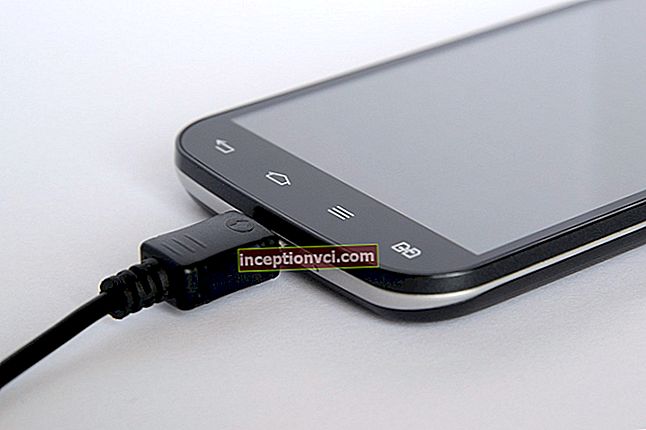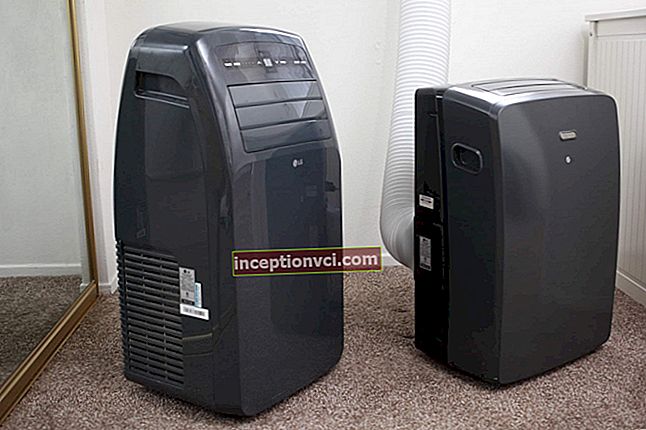Let's refresh our memory what types of headphones are and how they differ - this is a sacred knowledge, oh, how useful it will be in a store!
Monitor headphones are large, over-ear models. It is best to use them in tandem with a computer while sitting still, because walking down the street with a huge structure on your head and a three-meter wire is a dubious pleasure. Monitors have the best sound because of the large diaphragms, depending on the type (open / closed) isolate or completely pass external noise. Monitor headphones - the choice of a room music lover, gamer, office worker.
Overhead models are a reduced variation of "Monitors". The ear cushions of the on-ear headphones do not wrap around, but fit to the ear. Since the cups are also rather large, you can still fit large diaphragms inside with good sound and powerful bass, but at the same time, the overhead models are much more compact. In fact, this is a mobile version of monitor headphones - walking in these on the street is convenient and not ashamed.
Plug-in headphones, popularly called "pills", have not gained much popularity with large brands - such headphones do not have any noise isolation, they can press inside the ears, the sound is inferior. The famous Sennheiser brand has a line of high quality in-ear headphones, but the audience of such models is small. Most often, dime-sized earbuds are applied to players and phones. In-ear models are already "tablets" with silicone pads, with which the headphones can be fixed inside the ear canal. The spacers are excellent at isolating external noise. In-ear models sound much better than plug-in models, and precisely because of the spacers. A distinctive feature of the in-ear is powerful bass. It is this type of headphones that we will be reviewing!
In-channel models, in turn, are divided into dynamic and reinforcing models. In dynamic sound emitters, a small speaker, a membrane with a coil in a constant magnetic field, serves as a sound emitter. Sound quality depends to a large extent on the materials used. Unfortunately, the trouble with dynamic headphones is the bass-skewed sound.
In reinforcing models, a U-shaped "anchor" is in contact with the membrane, which, under the influence of magnetic fields, subtly transmits vibration to the membrane. The detail of the "fittings" is higher, but the frequency range and bass are weaker (more precisely, they are close to the normal). It is obvious that reinforcing in-channel models are appreciated by “warm tube” audiophiles, while dynamic ones are more to the liking of lovers of simple and electronic music, where there are no concepts of “stage” and “atmosphere”.
Testing technique
We first evaluated the comfort of the earbuds. The structure of the auricles is strictly individual for everyone, but nevertheless, certain conclusions can be drawn - are we worthy of ear pads or a cheap Chinese rigid polymer? Best result: quick fit, secure fit and complete isolation. A lot of attention was paid to noise isolation - if there were gaps between the silicone insert and the ears, then there could be no question of any isolation. The better the insulation, the less likely you will have to turn up the volume of the music to “outshout”, for example, the noise of the subway. And this is "not a buzz" - the higher the volume, the worse the ears.
The headphones were then plugged into the latest generation Apple iPod Classic, renowned for its exceptional sound path and zero noise. The player played a playlist consisting of jazz, progressive house and trance, punk rock and metal, light vocal music and hip-hop. All records were “grabbed” from CD into WAV format with the maximum possible bitrate of 1411 Kbps.
AKG K350

The Austrian manufacturer of amateur and professional (especially professional) audio equipment has a long history and is well represented abroad. In Ukraine, the company's products have won undeservedly little attention from the public, although the company's portfolio includes legendary models. It was doubly interesting to get acquainted with the sound of the K350, especially since this model is considered the top-end in the line of AKG in-ear headphones. Before us is not just headphones, but a headset with a microphone and volume buttons - which means that, when paired with smartphones, they also turn into playback control keys. True, the unit is too big for such small headphones. With my ears, AKG K350 did not work out friendship - with none of the three pairs of silicone eartips, the headphones did not want to normally stay in the ear canal. Therefore, while listening, I had to support the headphones with my fingers. However, ears are a strictly individual matter, for some people the K350 may seem incredibly comfortable.
The sound was quite surprising - with the declared frequency range, the K350 has a shift towards low frequencies. And the bass is all right, but the high frequencies were muffled - this turned out to be good in the metal, usually cutting on the ears, unnecessarily rattling music, which only benefited from such a sound.
Advantages: headset with controls, hard case included.
Disadvantages: not enough high frequencies, poor fit in the ears is possible.
Audio-Technica ATH-ANC23

Following the harsh Austrian metalheads are the graceful, like hokku, Japanese - if anything, we're talking about headphones. Based on personal experience, we expected from Audio-Technica ATH-ANC23 the sound characteristic of all headphones of this brand, namely, pronounced highs and a complete lack of bass. However, suddenly, in practice, the sound turned out to be completely different, new and, let's just say, very good. The main feature of headphones is active noise cancellation - it is much more effective than simple noise isolation, although it has its own peculiarities of work. The first is that the system is active, which means it requires power. Headphones with "noise reduction" always have a battery box hanging on the cable. It also hangs at the ATH-ANC23. There is one battery, AAA format, and so that the compartment does not hang out with it, a clothespin is provided on the case. The second feature of the noise reduction is the constant sound pressure in the ears. Noise suppression with the help of a microphone catches all external noise and emits sound in antiphase - minus to minus gives a plus, or rather "empty noise". It seems to be quiet in the headphones, but the ears are constantly "pressing". Without music, it is better not to wear headphones with the included noise reduction, unless in the subway.
It is noteworthy that the sound of the ATH-ANC23 does not lose at all from the noise reduction. On the contrary, you can hear surprisingly clear and deep bass, the emphasis is on the upper frequencies, while they do not "ring". Jazz, house and hip-hop sound equally good in these headphones. We give "credit" to Audio-Technica for the work on the sound of the ATH-ANC23.
Pluses: excellent noise cancellation, correct bass.
Disadvantages: The battery box gets in the way.
Creative aurvana in-ear2

At one time, the Creative dog was eaten on audio equipment - we owe the beginning of the era of full-fledged computer sound to this company, which gave us Sound Blaster back in time immemorial, then SB Live and finally X-R. That was in the nineties, and in the zero, Creative expanded their assortment with a variety of gaming peripherals, mostly also related to sound. They approached the matter in detail - the headphones turned out to be so wonderful that they often did not yield to the products of generally recognized authorities, such as Sennheiser or Beyerdynamic.
Before us is the second model of the Aurvana family of reinforcing in-ear headphones. The first Aurvanas were so good that almost all competitors, even in the higher price range, “tore into heating pads”.
The set of the headphones is worthy: a useless airplane adapter to a stereo, a very nice and comfortable hard case, a special tool for cleaning the earphone channels from the ear plug and as many as six pairs of silicone tips in three sizes.It is extremely prudent - if you lose one "plug", you do not need to switch to another size, you can take a spare one.
Even when looking at the characteristics of the new Aurvana, we were very confused by the range of reproducible frequencies - the upper edge was at around 16 kHz. instead of 20 kHz for the previous model. Apparently, this played a cruel joke, significantly reducing the sound quality of the second model compared to the first. It is clear that the armatures are unable to give strong bass, but in our case there was practically no bass at all. The sound picture is the most balanced, with vocals highlighted against the general background. But in general, the sound, as they say, is no longer a cake. Creative Aurvana ln-Ear2 lost in sound and noise isolation. however, they also reduced the price.
Advantages: balanced sound, six pairs of attachments, cleaning tool.
Disadvantages: less bass than you want.
Philips SHQ3000

To be honest, it is difficult to take seriously the products of a company that produces everything it can. With all due respect to brands that are "manufacturing everything", they do everything well, but not cool, as the audio industry requires. Therefore, it is worth looking at Philips SHQ3000 exactly as an amateur sports headphone, and not a competitor to German "sound people". The sportiness of the headphones lies in the rigid earhooks that securely hold the SHQ3000 in the ear canals, preventing them from falling out from sudden movements. Sitting motionlessly on a chair in such headphones is a dubious pleasure (the ears are uncomfortable). It's like a jumpsuit - there is nothing to do in it at home, you need to run outside. Since confusing such headphones is easier than ever, and unraveling, because of the earhooks, is absolutely impossible, an anti-entanglement ring is provided on the cable. So that during overly active headbanging (snowboard, BMX, punk concert), the headphones do not fly into the tartar, there is also a strong clothespin on the cable.
Despite all the external features, Philips SHQ3000 didn’t have any sound peculiarities - it would be foolish to expect good results from it as an initial model. The usual hollow sound, with a slight bass, with cut high frequencies. Without atmosphere or volume, the sound picture is flat, like a pancake of a hard drive. In general, the sound can be described as typical of any other cheap headphones.
Advantages: a good solution with a clothespin, fits securely in your ears.
Disadvantages: the sound is completely inexpressive
Razer Moray +

These headphones are held with us "Out of competition". And now we will explain why. Apparently, the main goal of Razer is to create a gaming place for a real gamer, in which everything will be with the Razer logo. Headsets have been added to mice-keyboards, joysticks and a bunch of small accessories. For the most part, Razer headsets are large monitor models with a boom microphone. However, Moray is a series for mobile gamers who, after parting with a computer, play on the go on a portable console. Mogau + is a headset and a gaming one. This is evidenced by both the equipment and the characteristics. To begin with, about the complete set: in addition to the standard three pairs of silicone tips, there are two special headset adapters. They allow you to use a microphone in Sony PSP and Nintendo DS - these consoles have special headset jacks. The headset is friendly with smartphones, including the iPhone, without adapters.
Another feature that makes the Razer Moray + a gaming model is the frequency range. The upper limit is at 11 kHz, which, as it were, hints that listening to music in these headphones is contraindicated. They are designed for voice transmission, there is a compact omnidirectional microphone on the cable.
With a clear understanding of what we were going to hear, we nevertheless started the test. The result is a little predictable - the female "high" vocals have disappeared. And sometimes it just disappeared in the literal sense - the voice sounded at frequencies higher than the headphones are capable of producing. In fact, the cutoff frequencies give the TeamSpeak effect, when the interlocutor's voice is heard well and at the same time it does not hurt the ears. When you turn on the music, you get TeamSpeak with music in the background.Before us is a one hundred percent headset, not music headphones, so it would be unfair to compare it with other models in the test.
Advantages: adapters included.
Disadvantages: strictly gaming headphones, not music lovers.
Sennheiser CX 870

There are two types of headphones: Sennheiser and all the others. The German sound authority is indisputable, and Sennheiser is at the top of amateur and professional audio. The company's portfolio includes three lines of in-ear headphones: regular MX pills, in-ear CX and professional IE. Initially, the CX series, or rather the CX300 model, gained immense popularity for the price / sound quality ratio. Then the company, as they say, "suffered" - the following models, which practically did not change the sound, became too big and jumped up in price.
CX870 looks very fashionable. The problem of unnecessarily large cases has not gone away - the headphones are so big that you can't put them in your ears right off the bat, you need to spend time to fix them inside more carefully. But there are no complaints about the quality of the silicone tips - they hold perfectly, but they isolate the noise rather weakly.
There is also a cross in the hole of the nozzles. For what? Protects from falling out special foam filters installed in audio channels to protect against ear plugs. For "Mash-rasteraash" there are spare filters in the kit.
The sound is typical of the Sennheiser CX line - powerful, deep, even uterine bass that climbs wherever drums are. Sometimes there is too much bass, this is especially felt in genres where "boom" is not needed - jazz, new age, punk rock. But lovers of dubstep will rejoice. Mids and highs are generally balanced, do not cut ears and are not muffled by bass, with the atmosphere and volume in full order. Sennheiser, who would argue!
Advantages: balanced sound, filters.
Disadvantages: exaggerated bass in places.
Sony MDR-EX310LP

Germans and Japanese have been arguing in the automotive world for half a century. In the world of sound, the Germans still prevail. But even the descendants of the samurai have striking glimpses when the proud Europeans cannot withstand the competition. But is it really possible to take headphones for 300 hryvnia seriously, especially from a company whose products cost a good third is only a brand? It turns out that you can ...
The set is more generous than you expect - a hard case, a mold for storing folded headphones, a reel for winding up excess cable, seven pairs of silicone tips, four pairs of which are regular and three are filled with foam inside for better noise isolation. Unfortunately, we did not feel the difference between the types of tabs - in both cases, the noise isolation is very mediocre.
Another signature feature is the anti-slip design of the earphone. Thanks to a special protrusion, the earphone holds on to the lower "curl" of the auricle, which is why it does not slip out, even if you pull the cable hard. For this Sony express mega-respect - in the subway, especially in winter, from such maneuvers, headphones often end up hanging from the floor.
When you turn on the music, you immediately feel the bass - deep, sometimes muffling the middle frequencies. Even simpler drums are sometimes lost behind the bass. And in the absence of vocals in the track, the bass generally pulls the whole picture onto itself - you have to turn the equalizer. But, surprisingly, this property of headphones found itself in jazz, where the double bass begins to sound clearer, you feel the vibration of each string - the recording sounds atmospheric. nice, easy to feel the location of all the tools.
Advantages: balanced sound, secure fit in your ears.
Disadvantages: bass is sometimes out of place strong.
Outcomes
In recent years, many new players have entered the headphone market. Will debutants be able to “shoot”? Will the luminaries of the genre hold back the blow, will not disgrace the reputation in difficult times? Razer is faithful to the gaming ideology - their headphones are still designed specifically for team communication, but not for casual listening to music. AKG was surprised by the sound with a preponderance of bassCreative frankly passed with the second model in the Aurvana line and, probably, due to this, it has already released the third version. Philips in terms of sound is in the "cheap and cheerful" niche. Sennheisers were noted for consistently good sound with prominent bass. The only pity is that the shape of the company's in-ear headphones becomes more and more dubious over time.
In general, the trend of punchy bass is visible - not that set by Monster and rapper Dr. Dre with their overly bass Beats headphones, or the current dubstep and Lady Gaga require strong low frequencies. Even in the Audio-Technica model, the trademark "accent" of which was on the high frequencies, this time we heard a kind juicy bass. Not only for this, but also for the excellent noise reduction and overall sound quality, the Audio-Technica ATH-ANC23 takes first place.
In turn, Sony surprised us a lot with its inexpensive, but what is really there - cheap headphones of very good quality, with a number of very interesting chips and incredibly good sound for such a price. Definitely the Sony MDR-EX310LP deserved to be the best buy out of the whole test.









